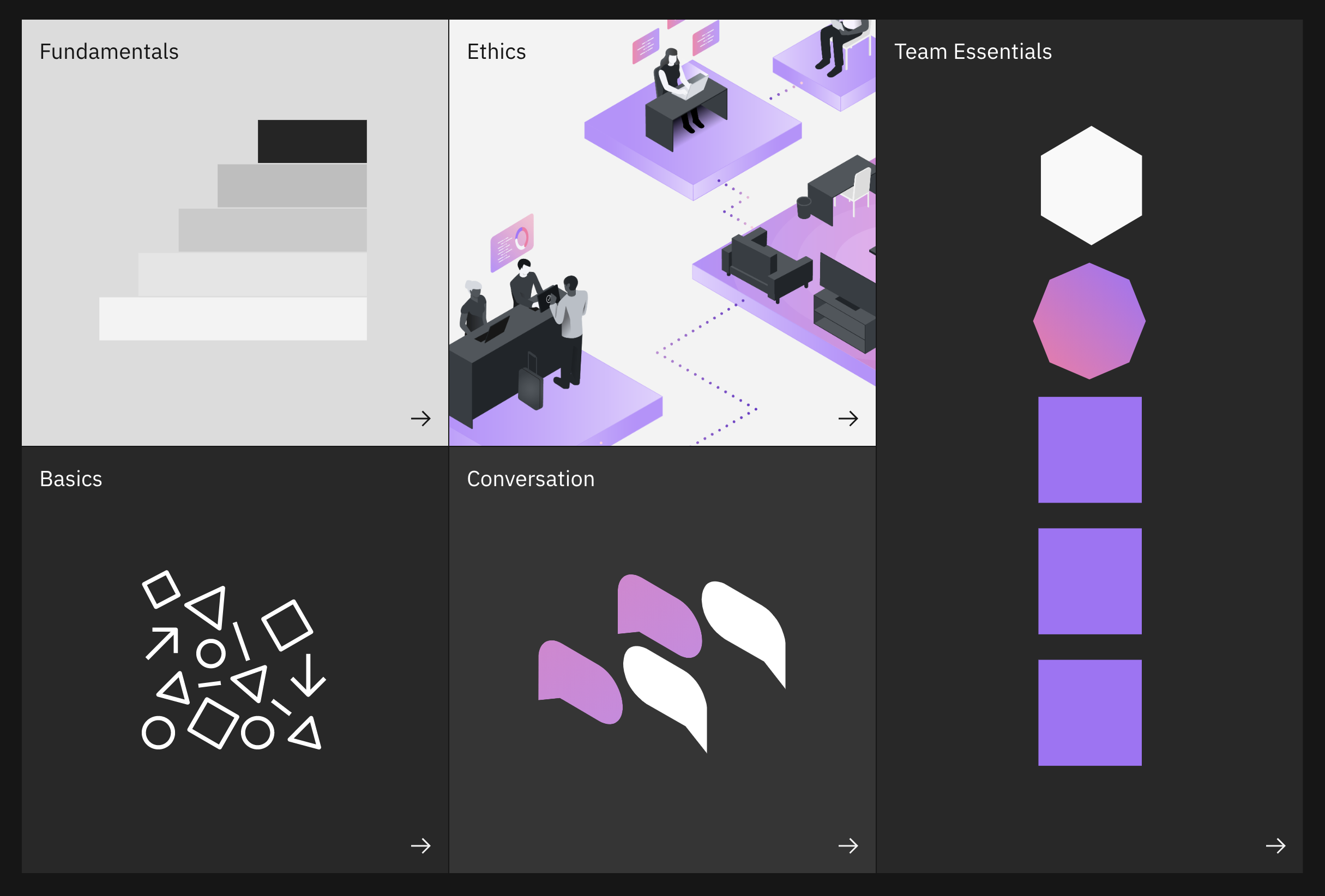
IBM Design For AI ︎
Objective
Empower and educate designers inside and outside of IBM to create AI Experiences that are based in practical and ethical design standards.Design
Our team was developing what it means to design for AI systems including machine learning, AI user interface design, and conversational user experience design. I facilitated and shared best practices to empower designers to create powerful AI experiences.We developed a huge amount of content that helps designers get started with designing with AI. We were specifically focused on Conversational Design Principles, Ethical AI Practices, and developing the Human-Machine Interaction model.
These originally took the form of guides that were passed around IBM and product teams, but have recently made the transition into a public-facing section of the IBM Design site. The goal of this content is to promote Ethical and Practical AI design principles in the technology field, and make that information open to everyone.
I also assisted in creating our Human-Machine Relationship Model, which became our way to represent the interaction patterns of a working cognitive system to those people.
As part of the Conversational Design portion of the design guides, I worked on developing the teams Conversational UX principles. This involved a large amount of technical and conversational theory research. I poured through decades of conversation analysis so I could develop principles that designers would find tactical and digestible.
I also worked to develop design thinking exercises and facilitation techniques to assist teams in implementing cognitive solutions into their products. These started off as 2-3 day camps that consist of design, development, and AI theory. The objective of these camps was to get teams working on a cognitive solution as soon as possible. Because we were only a team of 3, we worked with a large amount of talent inside and outside of the company to help our cause.
Takeaways
- Communication is absolutely key to designing anything. Whether that be a conversation, user interfaces, a logo, etc. If you can find the methods and mediums that best facilitate understanding between yourself and your users, you are designing in the best possible situation.
- Setting up future designers for success is always worth your time and is a great way to design at scale.
- Explaining something very complicated in a very simple way is very hard, but it’s worth it and has impact.
- Leverage the smart people around you, because they make you smarter and better suited to help others.
Team
Zack Causey - Visual/UX Designer
Adam Cutler - Distinguished Designer
Lawrence Humphrey - Front End Developer/UX Designer
Milena Pribic - UX Designer/Researcher


